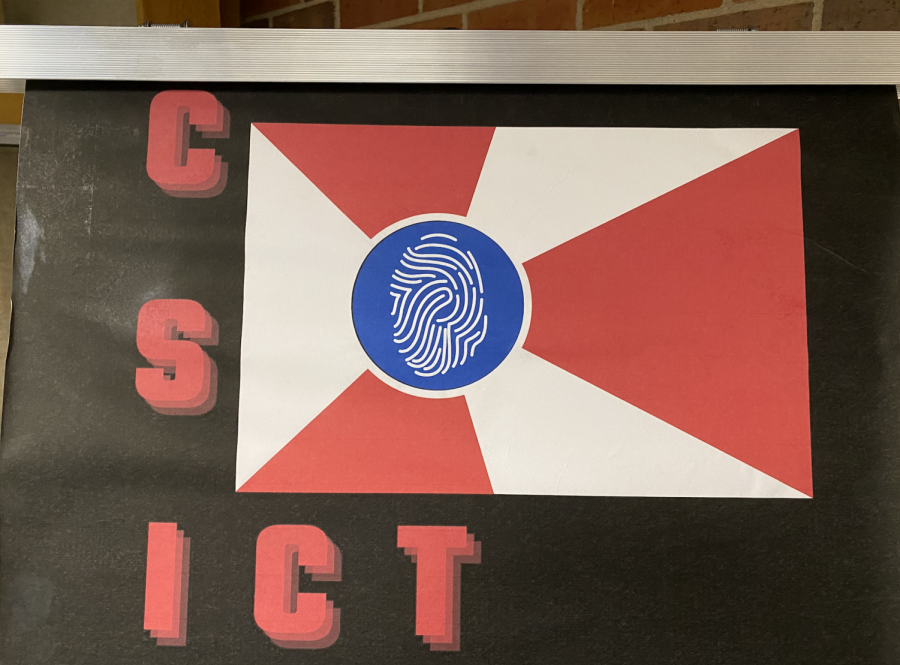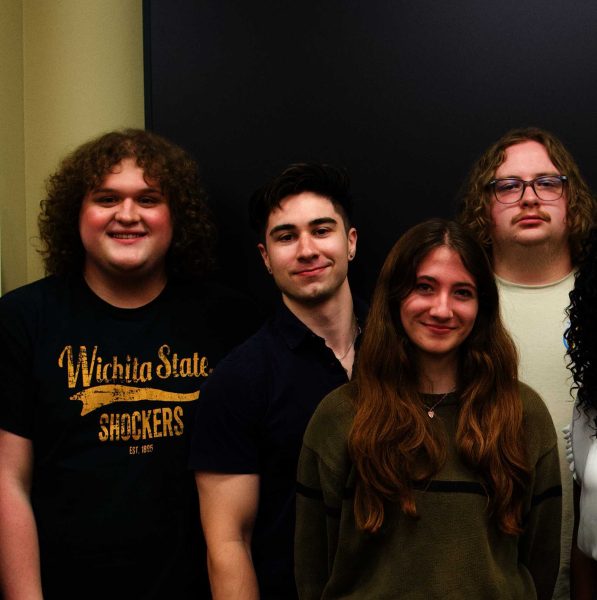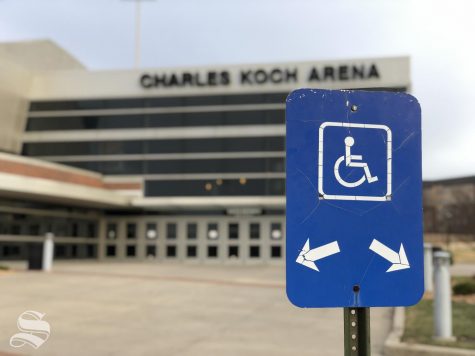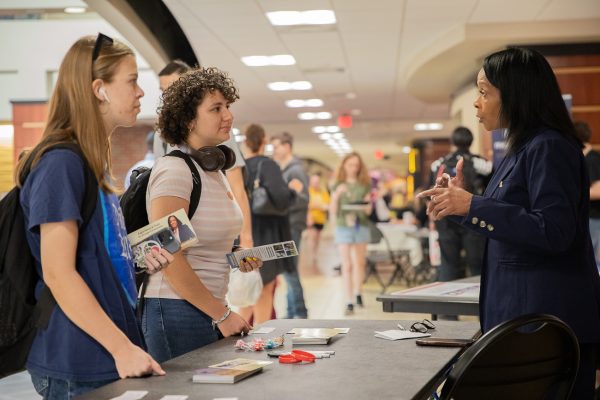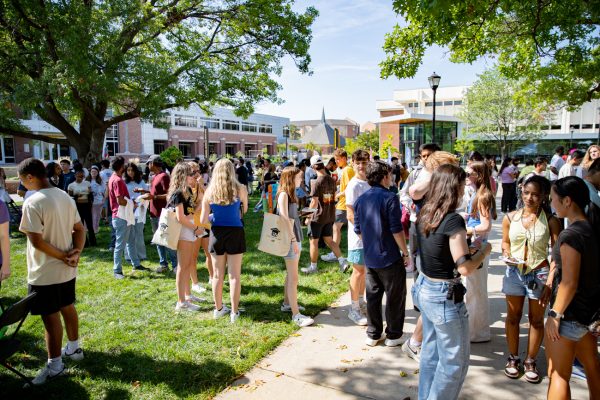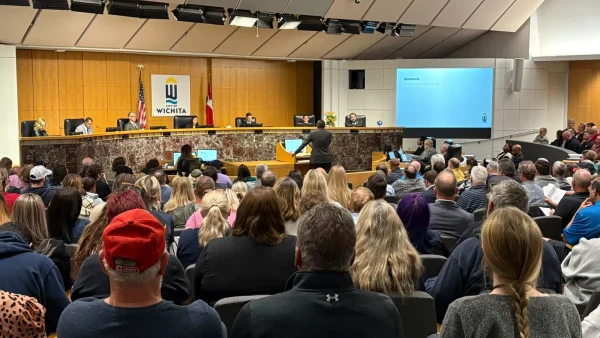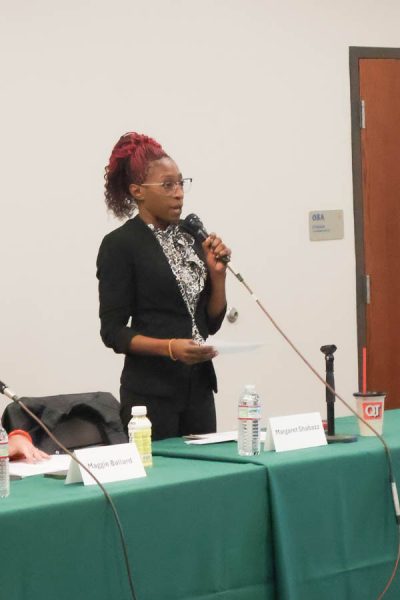True crime in the Ablah Library: Graduate student display lays out a timeline of forensic sciences
Crime Scene ICT is located in the basement of Ablah Library by special collections
If you walk into the basement of Ablah Library anytime soon you might see something you haven’t seen before: four skulls and crime tape.
But don’t worry, a murder hasn’t been committed. If you look closer, you’ll see instead a timeline of forensic sciences in Wichita and Wichita State as a whole.
The display — which will be up through the end of the semester — was created by graduate student Sara Rue in pursuit of a museum studies certificate.
“The intent behind it is to show the connections over the past 100 years between Wichita State University and the development of Forensic Sciences in Wichita,” Rue said.
The display began with the collection of O.W. Wilson, Wichita’s chief of police from 1928-1939.
“His advances with reforming the police department and bringing in forensic sciences and really sort of pushing that element,” Rue said.
Wilson changed the way the department did many things. One of his main creations was the Plane Posse, which was intended to help catch bank robbers. Instead of chasing my foot or car, this creation brought planes into the mix.
An illustration in the display jokingly brings this creation to light.
“There’s this delightful character of him, riding an airplane chasing a bank robber who’s also riding an airplane which is completely unrealistic,” Rue said. “But it’s just this sort of fun joyous element that also really draws the eye.”
Wilson pushed for police training in different areas of forensic sciences, including fingerprint training in November of 1928 — eight months after he began as chief. During these lessons, cops learned the best ways to extract a fingerprint from a surface and how to properly identify it.
Before the use of fingerprints for identification, cops would use birthmarks, size of head, height and more for help. This is still used to this day, but can prove to be difficult when thousands of people identify with a characteristic. That’s when fingerprints come into play.
From Wichita to Berkeley
Rue’s research did not start and end with O.W. Wilson’s collection. Her research brought her to the west coast for information — Berkeley, California to be exact.
“After he left Wichita he went … to Berkeley to teach for a while and then he went back to Chicago and then he went back to Berkeley and there’s a lot of back and forth,” Rue said.
There, Rue was able to get a personal glance into Wilson’s life.
“They have Wilson’s personal letters between him and other police chiefs around the nation that were trying to do all those reforms at the time so I got to look at those which was very exciting,” Rue said.
“I think it’s really fascinating to look at primary source items.”
One of Rue’s main goals in creating the exhibit was to bring just enough information and special touches to keep people interested.
She said travelling to where Wilson was originally from helped this vision.
“I wanted to make sure that when I did the exhibit, you want to create interest in the subject matter without overwhelming the individuals who are observing it,” Rue said.
True crime
While many people may come by this display by coincidence, many students may find that this topic already interests them by nature.
In a world full of social media and television, true crime has become a fascination of many. From TV shows based on serial killers, to podcasts dedicated to solving unsolved mysteries.
“There’s a lot of true crime podcasts that are out there, so I think there’s interest in that that is spanning generations,” Rue said.
Rue said crime in and of itself is interesting.
“So there is an interest there, I think that there’s always that kind of … shock or gore factor, but that is sort of oddly appealing to see and you’re like, ‘Oh gosh, that’s crazy,’” she said.
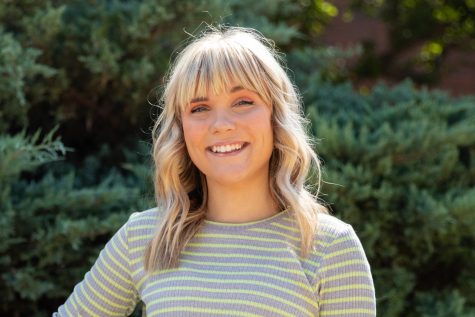
Lindsay Smith is the former editor-in-chief and newsletter editor for The Sunflower. Smith was a journalism major at Wichita State with a minor in creative...



